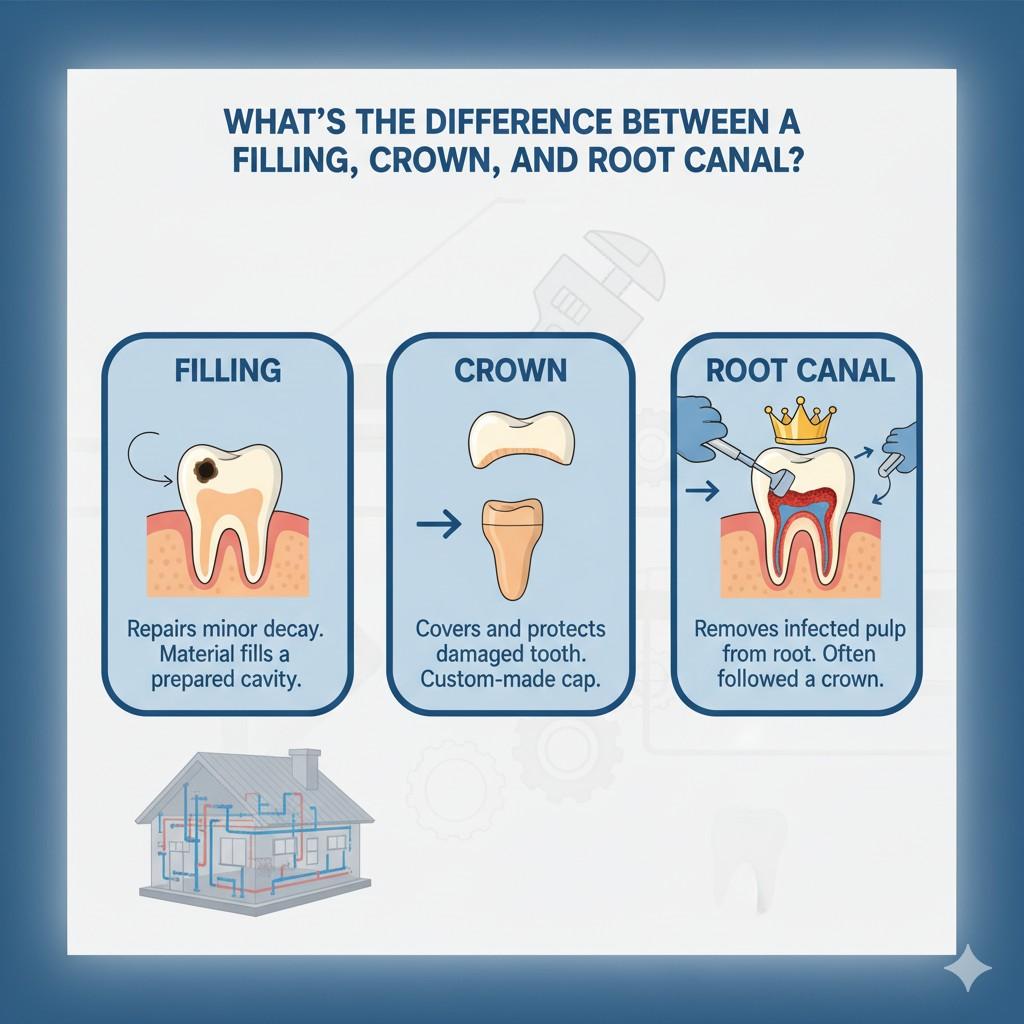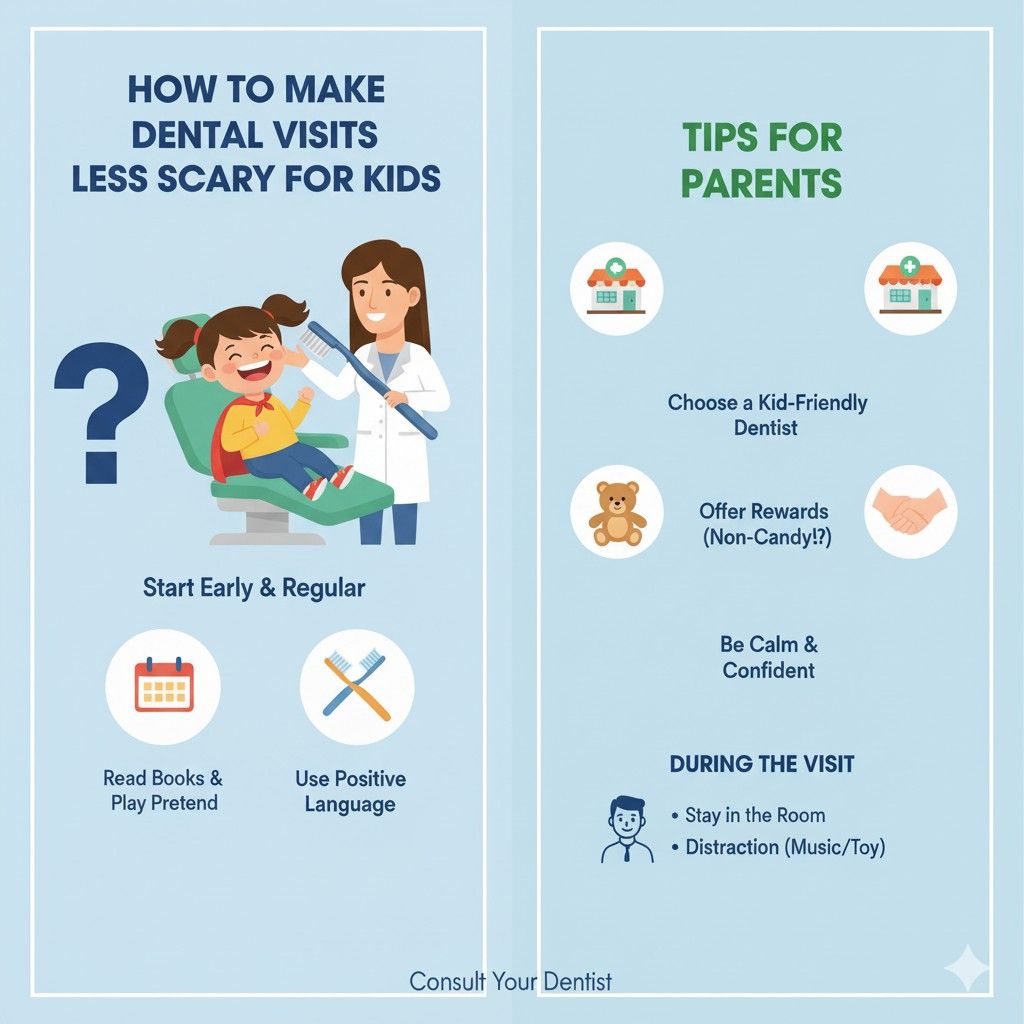At The Dental Place, we often hear patients ask questions like: “Do I need a filling or a crown?” or “What exactly is a root canal?” While these treatments may sound intimidating, they’re actually quite common — and each one serves a different purpose when it comes to restoring your teeth and protecting your oral health.
Understanding the differences between a filling, a crown, and a root canal can help you feel more confident and informed about your dental care. In this blog, we’ll break down what each treatment is, when it’s needed, and what to expect during the procedure.
-
Dental Fillings: Repairing Minor Tooth Damage
What Is a Filling?
A dental filling is one of the most basic and commonly performed procedures in dentistry. It’s used to repair a tooth that has been damaged by decay (a cavity) or minor fractures.
When Is a Filling Needed?
You might need a filling if:
- You have a small to moderate cavity.
- Your tooth has been slightly chipped or cracked.
- You’re experiencing sensitivity due to enamel loss.
What Happens During the Procedure?
The dentist will:
- Numb the area around the affected tooth.
- Remove the decayed or damaged portion.
- Clean the space thoroughly.
- Fill the space with a material such as composite resin, amalgam, or ceramic.
The entire process usually takes less than an hour and restores both the function and appearance of your tooth.
Quick Summary:
- Used for: Small cavities or minor damage
- Time required: Single visit, usually under an hour
- Lifespan: 5–15 years depending on the material used
-
Dental Crowns: Full-Coverage Tooth Protection
What Is a Crown?
A dental crown is a cap that covers the entire visible portion of a tooth. It’s used when a tooth is too damaged or weakened for a filling to restore effectively.
When Is a Crown Needed?
You may need a crown if:
- You have a large cavity that can’t be filled.
- Your tooth is cracked, broken, or worn down.
- You’ve had a root canal (more on that below).
- You need to protect a weak tooth from breaking.
What Happens During the Procedure?
Getting a crown typically involves two visits:
- During the first visit, the dentist will shape the tooth, take an impression, and place a temporary crown.
- The impression is sent to a lab where your custom crown is made.
- At your second visit, the temporary crown is removed and the permanent one is cemented into place.
Crowns can be made from porcelain, ceramic, metal, or a combination, depending on your needs and preferences.
Quick Summary:
- Used for: Heavily damaged, cracked, or weakened teeth
- Time required: Two visits
- Lifespan: 10–15+ years with proper care
-
Root Canal Therapy: Saving an Infected Tooth
What Is a Root Canal?
A root canal is a procedure that treats the inside of the tooth — specifically the pulp, which contains nerves and blood vessels. When the pulp becomes infected or inflamed, a root canal is needed to save the tooth.
When Is a Root Canal Needed?
You may need a root canal if:
- You have a deep cavity that has reached the tooth’s pulp.
- You have a cracked or broken tooth that exposes the nerve.
- You’re experiencing severe tooth pain, sensitivity, swelling, or a pimple on the gums.
What Happens During the Procedure?
- The dentist numbs the area and creates a small opening in the tooth.
- The infected pulp is removed, and the inside of the tooth is cleaned and disinfected.
- The space is filled with a material called gutta-percha.
- The opening is sealed, and in most cases, a crown is placed afterward to protect the tooth.
Despite its reputation, modern root canal therapy is virtually painless and no more uncomfortable than getting a filling.
Quick Summary:
- Used for: Infected or severely damaged teeth
- Time required: One or two visits
- Lifespan: Often lasts a lifetime when followed by a crown
How Do You Know Which One You Need?
The right treatment depends on the severity of the damage, the location of the tooth, and the health of the surrounding tissue. That’s why a professional dental exam and X-rays are essential.
At The Dental Place, we always take the time to explain your options and recommend the best treatment based on your individual needs.
Final Thoughts
While a filling, crown, and root canal may sound similar, each plays a unique role in restoring your smile. Whether you have a small cavity or a more serious dental issue, the key is to address it early before it worsens.
If you’re experiencing tooth pain, sensitivity, or think something might be wrong, don’t wait.
📅 Book your appointment at The Dental Place today, and let our experienced team help you protect your teeth and restore your smile with comfort and care.


